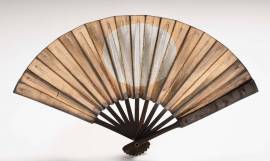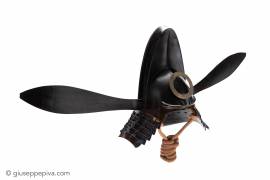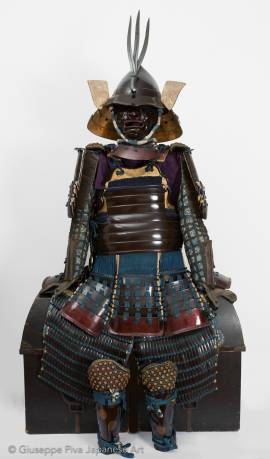Mid Edo Period (1615 - 1867), Iron, paper with silver and gold-leaf and bamboo.Menhari-gata (opening fan), sensu-gata (enlongated shape)Lenght: 33.5 cm. - Width open: 55 cm. Iron fan with an elegant shape, with nine bamboo ribs.Customarily carried in the hands or tucked in the obi (belt), the folding fan played a significant role in Japanese etiquette, especially on formal occasions, and was rarely ever out of a samurai's possession. Perhaps because it was considered such an ordinary item, it was easily employed as a suitable side arm with only minor modifications....
WORKS FOR SALE
Samurai helmet in the shape of a court capMomoyama to early Edo Period17th century The wearing of helmets that reproduced the shapes of traditional headgear became common among members of the military class by the end of the 16th century, in part due to new battle tactics that prioritised fire-weapons and removed generals from the battlefield, in part for the new taste of the warrior class, which tended to emphasise the individuality of the commanders. Helmets shaped as a tōkanmuri, a ceremonial lacquer hat worn at the Chinese court by high-ranking literati and statesmen, were...
Nerikawa Tosei gusokuLeather samurai armor PERIODLate Edo period (1615-1868), 19th century This authentic samurai armor is entirely made of lacquered nerikawa(leather) except for the iron kote. Nerikawa has always been used when building samurai armor in order to diminish its weight, but it is only during the second half of the Edo period that we find full suits made only with this material. Even the helmet, a very nice momonari kabuto decorated with a slander maedate shaped as three bamboo leaves, is made with leather.Both sode are decorated with a large figure of a...
Copyright © 2016 - giuseppe piva - VAT: 05104180962










